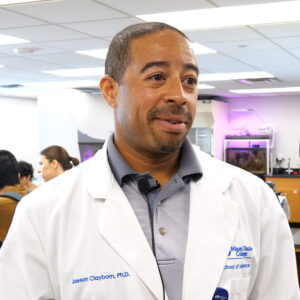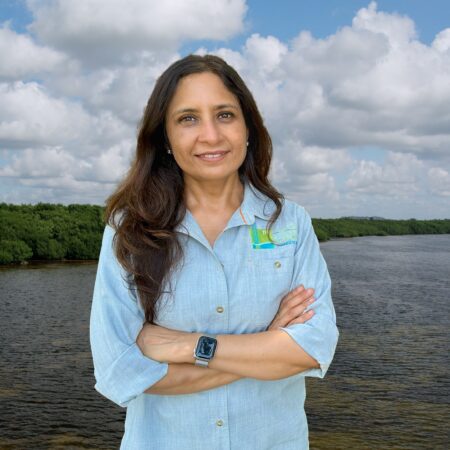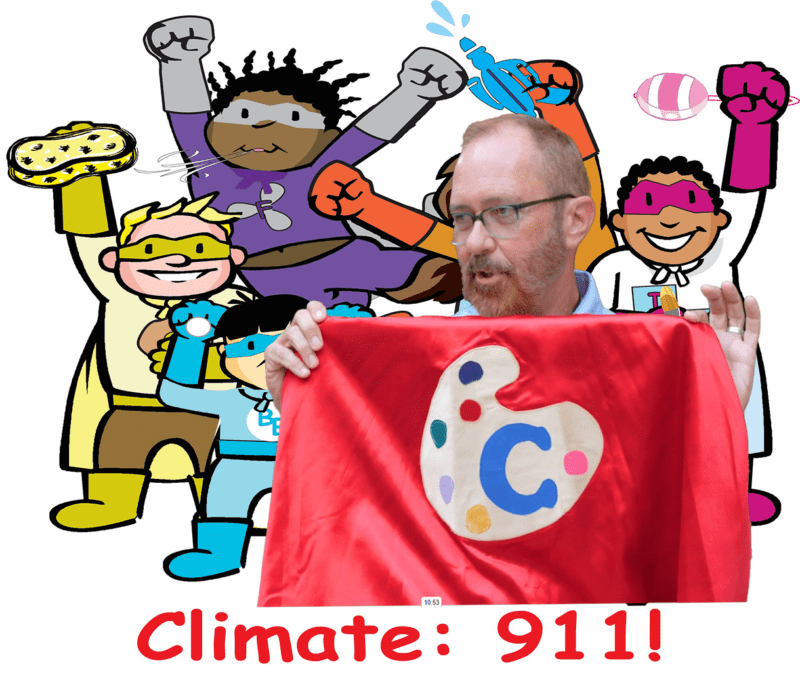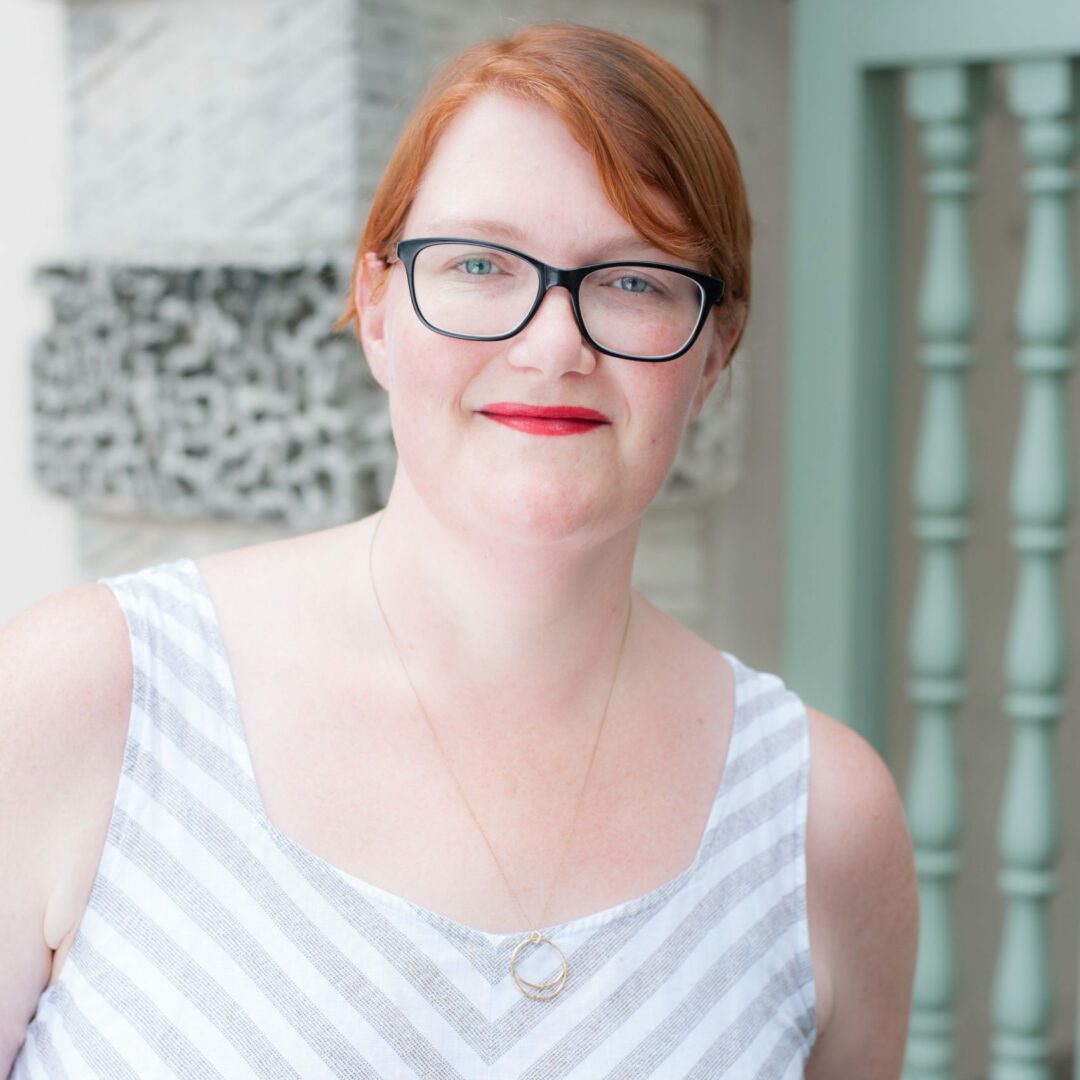TRANSCRIPT: (00:00)
David Hardy
Hi, I’m David Hardy, the Horticulture Manager at Vizcaya Museum and Gardens, I’ve worked here for almost 10 years, and have seen a lot of changes at Vizcaya’s Gardens. So the original vision for Vizcaya Gardens was to have, for Vizcaya really, was to have an Italianate-French style garden right in the middle of South Florida in a swamp.
(00:26)
David Hardy
There were obviously lots of challenges in having this vision put into reality, not least of which was the fact that it was very difficult to get materials down here at the time, it was a challenge to find people. So everything had to be brought in. They cleared a lot of the swamp that is around that now forms part of our main gardens and the house to make the gardens.
(00:55)
David Hardy
But they also did a lot of protection, in the sense that they protected the hardwood hammock that’s up to the west of us, as well as parts of the mangroves to protect the property from wind and storm. The challenges we face today are pretty much the same as what they must have faced back a hundred years ago, except I think now it’s a little worse, in the sense that, back then, they had tidal surges that were a few feet high,
(01:24)
David Hardy
now we have tidal surges that are eight or nine feet high. The hurricanes are getting, have been strong back then, but they’re also strong now. The other thing that we have a big challenge with here is that we have a very developed canopy of trees around us, so that is a challenge in today’s world where we have to maintain these trees
(01:45)
David Hardy
we have to, you know, make sure that they’re on a regular trimming schedule so that they’re not a danger when winds come by and the trees are saved as well as, you know, our visitors are kept safe at all times. Back when the gardens were set up, they had a very limited pallet of plants that they used here.
(02:04)
David Hardy
They basically used three different types of plants, which was podocarpus, ficus, and casuarina, that was used extensively through the gardens, mainly for hedging. There was also the idea back then that Italian gardens were mainly green gardens, that everything was greenery. That thinking has changed a lot over the last 30 or 40 years, really, where more research has been done and people have discovered that actually Italian gardens were more colorful, they had more flowers, they had vegetables, they had all different kinds of things.
(02:36)
David Hardy
So that’s what we bring into the gardens these days. The other thing as well is that we are now a display garden, we are considered a display garden. We also have visitors, you know, 364 days a year or 363 days a year, so visitors wanna see pretty, they wanna see flowers, they wanna see things that are also native.
(03:04)
David Hardy
So we have a great mixture of native, as well as exotic plants in the gardens. So the Italian gardens, the Italian-French gardens, the design and landscape gardens are all done with almost, I’m sorry, almost all done with native plants or plants that have been sort of grandfathered into the Miami landscape over the last hundred or so years.
(03:31)
David Hardy
We do obviously try to bring in many more native plants, from our learnings over the years, having dealt with different kinds of storms, different kinds of tidal surges, we’ve had great big losses of plants, native as well as exotic. So from those, from all that, we have learned a lot as to which plants will survive in the future for, you know, if we have a big tidal surge, what plants hold up best under stormy, windy conditions.
(04:04)
David Hardy
So yes, we are actually switching out plants that way and replacing plants that have died with very strong and, you know, useful natives. Having said that, we also don’t use a lot of exotic plants that we know will not survive because, you know, the avid ability of a storm is very, you know, it hangs over our head or every storm season.
(04:31)
David Hardy
We know it’s gonna come, it’s just a matter of when. So our plant choices are very carefully made on that basis, while still maintaining a lot of plant diversity and interest, not only for the health of the garden, but also for, you know, our visitors and people that come to study plants here. Plants that are more so tolerant are already, as you see around you right now,
(05:00)
David Hardy
this whole garden was completely flooded and completely covered in muck, like basically, right up to the wall, it was excavated down. All the plants that you see here are either have been planted or survived the storm. The other example is in our rose garden, in the fountain garden. Right there, roses were destroyed more than a hundred years ago, well, no more, but close to a hundred years ago.
(05:28)
David Hardy
They were never replanted because the soil got salted. Now we grow roses there that are somewhat salt tolerant. They’re grown on stock, on root stock that is, you know, friendly to Florida soils and should tolerate some degree of salt intrusion. Salt is obviously not the best thing for all the plants that we have, except for the mangroves and the mangrove habitats.
(06:01)
David Hardy
But we are sort of also planting things that eventually, even if they do get slightly drowned by seawater, will survive. I don’t think I don’t think there are any plants that are aside from the mangroves, really, that would protect the property from flooding. As I mentioned, the mangroves really are sort of a sort of filter. They filter out the trash.
(06:30)
David Hardy
Basically. They let the water in and they let the wind in and the wind shear goes above them. So it protects the property somewhat. But other than the mangroves, that can actually live in sea salty water, we don’t really have anything else that can be that strong. That’s why the mangroves are so important to us. There is in horticulture acronym, which is integrated plant management, that’s IPM that involves looking at plants from basically a holistic point of view.
(07:04)
David Hardy
So we are always on the lookout for pests. We treat pests. Any anything that we see as, you know, as as detrimental to the plant life. We treat it as soon as we find it. So we sort of try to nip everything in the bud. We have a very strict and punctual sort of fertilization schedule that we do twice a year on on all, on all the landscaping to keep the keep the sorry to keep our plants healthy.
(07:38)
David Hardy
We also use mainly organic pesticides and chemicals on throughout the gardens. We try not to use harmful chemicals that are detrimental either to the environment or people or anything else, mainly for a few reasons. One, you know, it’s obviously not very good for the environment to use such products. The other reason is that we are also very close to the base of those run off into the bay and that we really have to be very, very conscious of because of the damage that fertilizers and governments can do to the wildlife around our native areas of the bay.
(08:19)
David Hardy
So we have two basic big native areas. So one is the mangroves which which are protected by the county, by the state, by the country, as well as the hardwood hammock, which is very delicate ecosystem right now because it’s the only one of three left in Miami-Dade County in maintaining these to native ecosystems. Obviously, the mangroves get a lot of the brunt of climate change.
(08:51)
David Hardy
The tides rise higher, The the winds are stronger and the mangroves hold back at least somewhat to some extent. All the all the trash that comes into comes in with the tides. So we have it’s sort of a multi-pronged approach that we have there where we maintain these two native areas by keeping invasive plants out of it. We also enhance the native areas by planting natives in there sometimes when we need to, and the other thing that we do is that we have volunteers that come in and help with cleaning out these native areas.
(09:32)
David Hardy
So it’s a very active program that we have in and keeping our garden in our native areas as well as our main gardens, all in good shape. Climate change has happened. It is happening. We notice it every year. Every year we notice that the water, the sea gets a little higher on the barge out in front, the tides come up a little bit higher on the steps that lead down to the bay.
(10:02)
David Hardy
We’ve noticed that, for example, in 2017, when we had Hurricane Irma hit us, we had a seawall that was built to be about five feet above sea level. You know, based on the fact that that was probably going to be never going to the sea, was never going to come over. And an hour by the sea came right over it.
(10:22)
David Hardy
So because the tidal surge was eight, eight feet flooded the entire garden. So, yes, you know, it’s happening all the time. The other area where we see a lot of climate change is in how the plants are reacting to the new climate changes that are happening. So, for example, the winter this year has been very warm. So we noticed a lot of leaf drop, you know, we have had fall about three times this just in this winter with a lot of, you know, trees losing their leaves because of the heat and the extremely dry conditions.
(11:02)
David Hardy
We’ve also noticed that certain plants that wouldn’t bloom at this time are blooming. We noticed that some plants that sort of slowed down their growth in the winter are still growing really fast. So we have to deal with all these changes all the time. We also noticed a lot of other stuff that takes advantage of the the sort of warming or the changing climate such as insects, pests, things like that, that, you know, that usually go dormant at one time, but now, you know, more active for longer periods of time.
(11:36)
David Hardy
So there are a lot of changes and every year it gets more and more apparent that these changes are actually happening and will continue to get probably worse. So adjusting to a hurricane is not a thing that I would use as a term. It’s impossible to adjust to it. It’s just it’s just I think, trying to cope with the after effects of a storm.
(12:01)
David Hardy
So basically getting prepared for it is is key to is is the key to actually handling, you know, the threat of a storm to prepare for for storms that this guy has put into place many different objectives. The one one it all starts with a with the hurricane preparedness guide that we have that the whole organization is put together, which sort of delineates the tasks for different people as to what to do to prepare this place for a storm.
(12:37)
David Hardy
In terms of protecting the gardens, we have implemented a system called the Tiger Dam, which is a series of inflatable tubes that sort of mount up on each other, which basically will sort of allow some water to come through, but basically keeps all the trash out, which was a huge problem in Irma. In Irma, trash was so high in some places, three or four feet high that we had to basically excavate through the entire garden so that that system is in place for four key areas that we know just got flooded from the tidal surge, which includes the main gardens, the cafe area, the pool and the basement of the of the main house.
(13:21)
David Hardy
So those areas will be protected that way. We do have protocols for the rest of the gardens in that we do things like, you know, they move containers off that, you know, areas that are prone to be hit very hard by the wind. We we cover things up. There are lots of different things that we do to take care of.
(13:47)
David Hardy
As far as the House is concerned, There is the the Arts and Artifacts Division has their own protocols, which include, you know, blocking the windows, blocking the door, sandbagging this. So there’s a lot of other things that happen there. It takes a team effort. It takes about 5 to 7 days to get this place ready for a storm.
(14:07)
David Hardy
So as soon as we have a storm, Hurricane one or Hurricane two warning, you know, and depending on the strength of the hurricane, that’s about to come, we have different levels of preparedness that we go through. So we have a long, long list of native plants, mainly because we mainly for two reasons, really. One is that James Deering, when building Vizcaya was advised not to build a house by the bay, actually to build it up on the ridge after it’s there, which is just up there.
(14:38)
David Hardy
But he wanted privacy and he also wanted to protect the forest. So he actually built the house by the bay. And for that reason, this hammock, because it was on private property, got saved. There are hundreds of species of plants in there. There are sort of three levels of plants. You know, there’s the canopy, there’s a middle level, and there there are the sort of low growth shrubs that we have as natives.
(15:11)
David Hardy
This is Florida. So everything really just, you know, thrives and blooms and flowers and leaves. And, you know, as a horticulture team here, we don’t we are pretty unique in the US and in that sense is that we basically don’t have a no grow period. We are growing all the time. I mean, things are growing all the time, things that we trimmed, things have to be cut right now.
(15:35)
David Hardy
I would say everything has been doing pretty well. We haven’t noticed any, you know, decline any real pests over the last few months. Nothing that’s really harmed us. So that’s a good sign. We’ve developed some sustainability initiatives that lessen our carbon footprint as well as we have programs that try to outreach to the community to teach and learn.
(16:11)
David Hardy
It’s a two way street. We do a lot of those, those kinds of things. We also, in preparation for storms, we we take precautions. For example, you know, we would we are extending the height of the seawall around the property. That’s going to happen over the next few months. Inside the house. You know, there are plans to change the windows to hurricane proof windows.
(16:42)
David Hardy
So climate change, aside from the nature, there are also all the horticulture staff that work here. We notice it extremely acutely that every year gets warmer, it’s more humid, gets more exhausting to work. And so we try to work smarter, not harder. So that means early in the day we try to work outdoors and get the, you know, later on of day stuff done earlier.
(17:18)
David Hardy
Later on in the day. We work in the shade. We give, you know, we take a lot of breaks. We try to remain hydrated all the time. It’s very important as far as visitors are concerned. Our visitors ship drops quite a lot in the summer. We don’t have that many visitors in the summer, so they I guess they find their own way to cope.
(17:45)
David Hardy
But it’s basically just keeping yourself cool and hydrated. So what we are starting to do right now is to actually try and we’re doing a trial where we are getting our staff to come in off our early start, the day early and earlier, which is going to be, I think, very helpful for the summer. It also helps in, you know, getting the gardens ready for 930 when we open.
(18:13)
David Hardy
The other thing that staff do, we obviously provide, you know, clothing, uniforms that are breathable, that are sun, UV protection, that have UV protection, that are quick drying. It is not inevitable that the gardens will one day be flooded. I think I think the county as well as the, you know, the US government, the state government are taking measures to prevent that sort of thing happening.
(18:46)
David Hardy
That doesn’t mean that we are not going to have worse floods or worse windstorms or stronger hurricanes. Those are all going to happen for sure. I think the main goal here is to try and again, just be prepared for the worst. The worst may not happen, but it’s good to be prepared for and it’s good to take a realistic look at what is happening around the world, not just this country with climate change and learn from all these different experiences from people that are, you know, close to the water or have lived by the water.
(19:27)
David Hardy
For example, in Holland, they’ve they have the system of dikes that have protected them for centuries. And, you know, Miami-Dade really needs to look into that and take the lessons from there, which they are, I believe. So we can only do as much as we can to to protect the property, you know, based on how much money we have.
(19:51)
David Hardy
You know, there are budgets, there are, you know, allocations. You know, ideally, you know, you could build a huge wall around your property and nothing would ever happen. Or you can move the whole house somewhere else. But, you know, that costs millions and billions of dollars. So we really have, you know, we we try to keep this this treasure going for as long as we can, I guess.
(20:12)
David Hardy
And, you know, we hand it off to, you know, generation after generations have been around, been around for more than 100 years. So pretty sure it’ll be around for at least another 100 or so. I think that’s really that’s the future.



































